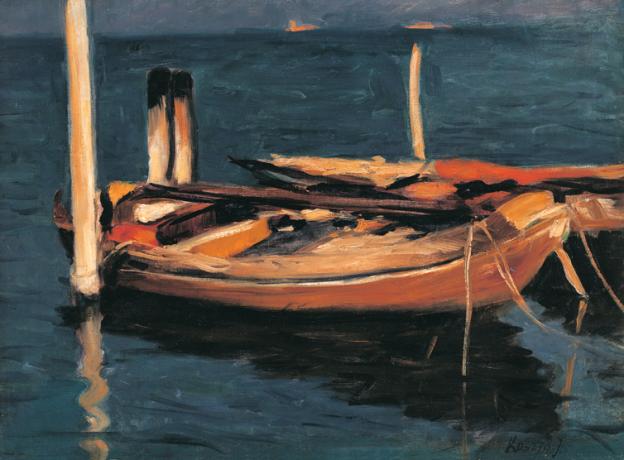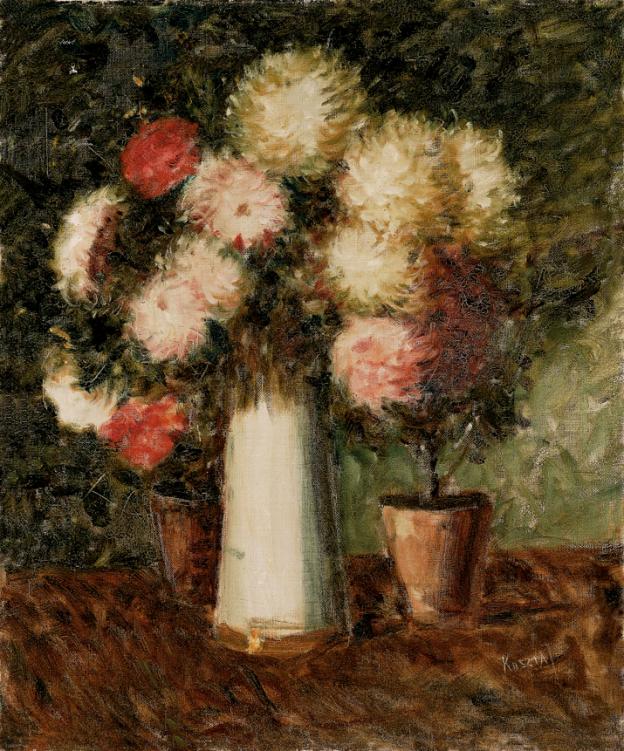József Koszta brought a breath of fresh air to Hungarian painting like very few others had before him. Fuelled by passion, his paintings were internationally regarded as characteristically Hungarian from the very outset. They were seen as colour-rich concentrates that profoundly and succinctly rendered the character of the Hungarian people and the complex and contrasted landscape it inhabited. Born into a poor family in Transylvania, Koszta made a concerted effort to work his way through every important school and country. A self-conscious, plucky man, Koszta relentlessly sought to find the space that best suited his needs, which he eventually found in the world of isolated farms in the vicinity of Szentes in the Hungarian Great Plain. He was briefly attracted to the Nagybánya and Szolnok artist colonies, but his desire for freedom and persistent reclusiveness was legendary. Suggestive and dramatic, his characteristically bitty, down-to-earth style made him a successor of Munkácsy’s spirit, governed by his own laws; nevertheless, however, his work was in keeping with contemporary European efforts. His ebullient colours connect him to the Fauves, and the almost autonomous imagery of his late period is strikingly Modernist in character.
Encompassing the entire oeuvre of József Koszta, presenting some one hundred paintings, contemporary photographs and numerous other documents, this exhibition affords an insight into the major stages and changes of the artist’s development. The exhibition chiefly seeks to show how a traditionally Hungarian painterly world could become important by European standards by means of the brushwork of an artist who took a modern stance and a European outlook on his own everyday life and environment.
The material of exhibition includes rarely seen works the audiences have rarely, or never before, seen. For example, one such novelty is a copy of a painting by Filippino Lippi dating from the painter’s formative years, revealing how the young József Koszta educated himself.
Curators:
Dr Anna Szinyei Merse, art historian, retired curator of the Hungarian National Gallery; Péter Fertőszögi, art historian, chairman of the Board of Trustees, Gábor Kovács Art Foundation
Co-operating partners of the exhibition:
Museum of Fine Arts – Hungarian National Gallery
József Koszta Museum – Szentes
János Tornyai Museum - Hódmezővásárhely
The exhibition is hosted with support from the Ministry of Human Resources, the Gábor Kovács Art Foundation and Várgondnokság Közhasznú Nonprofit Ltd. It is open until 17 April 2016.

